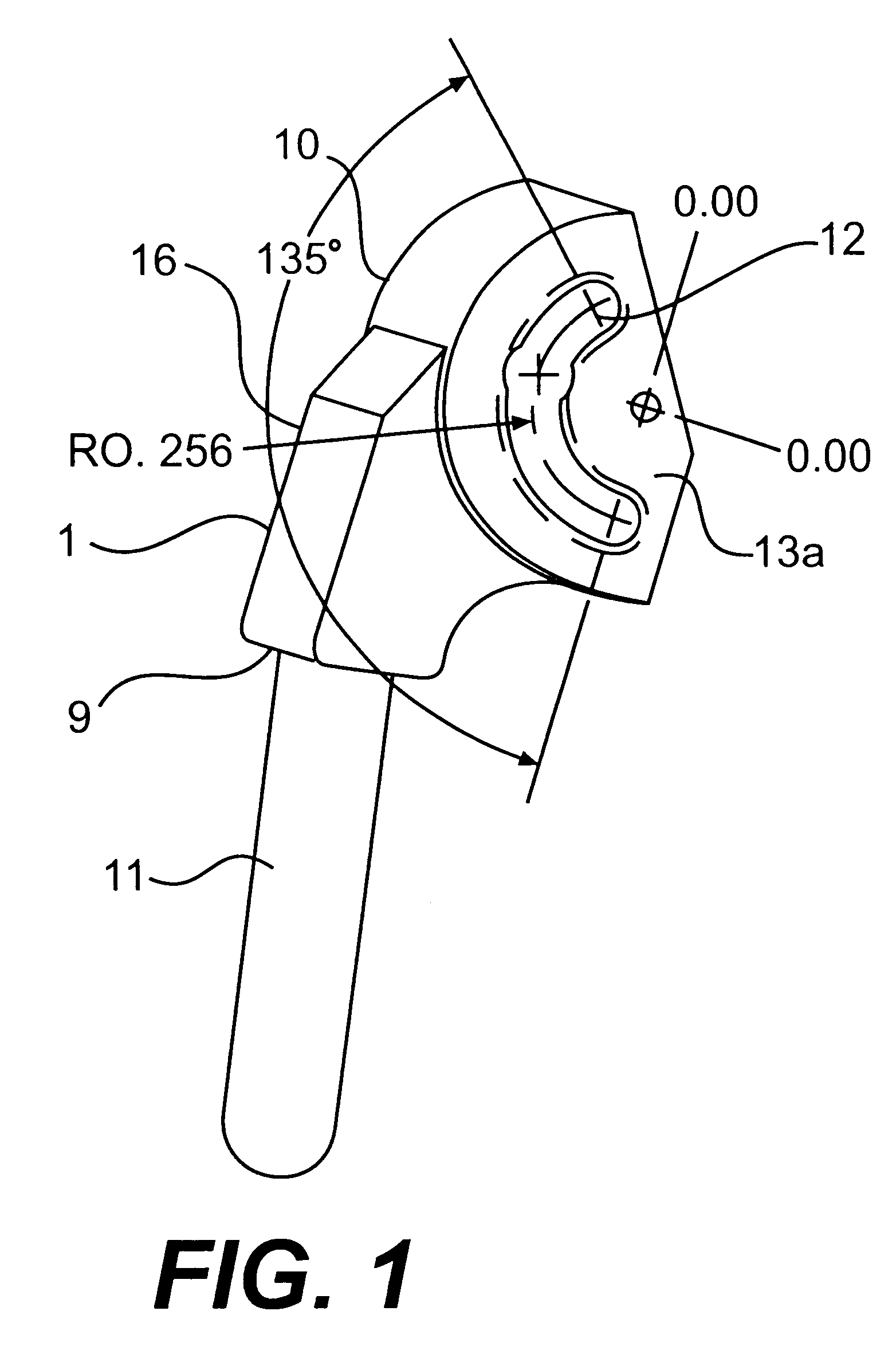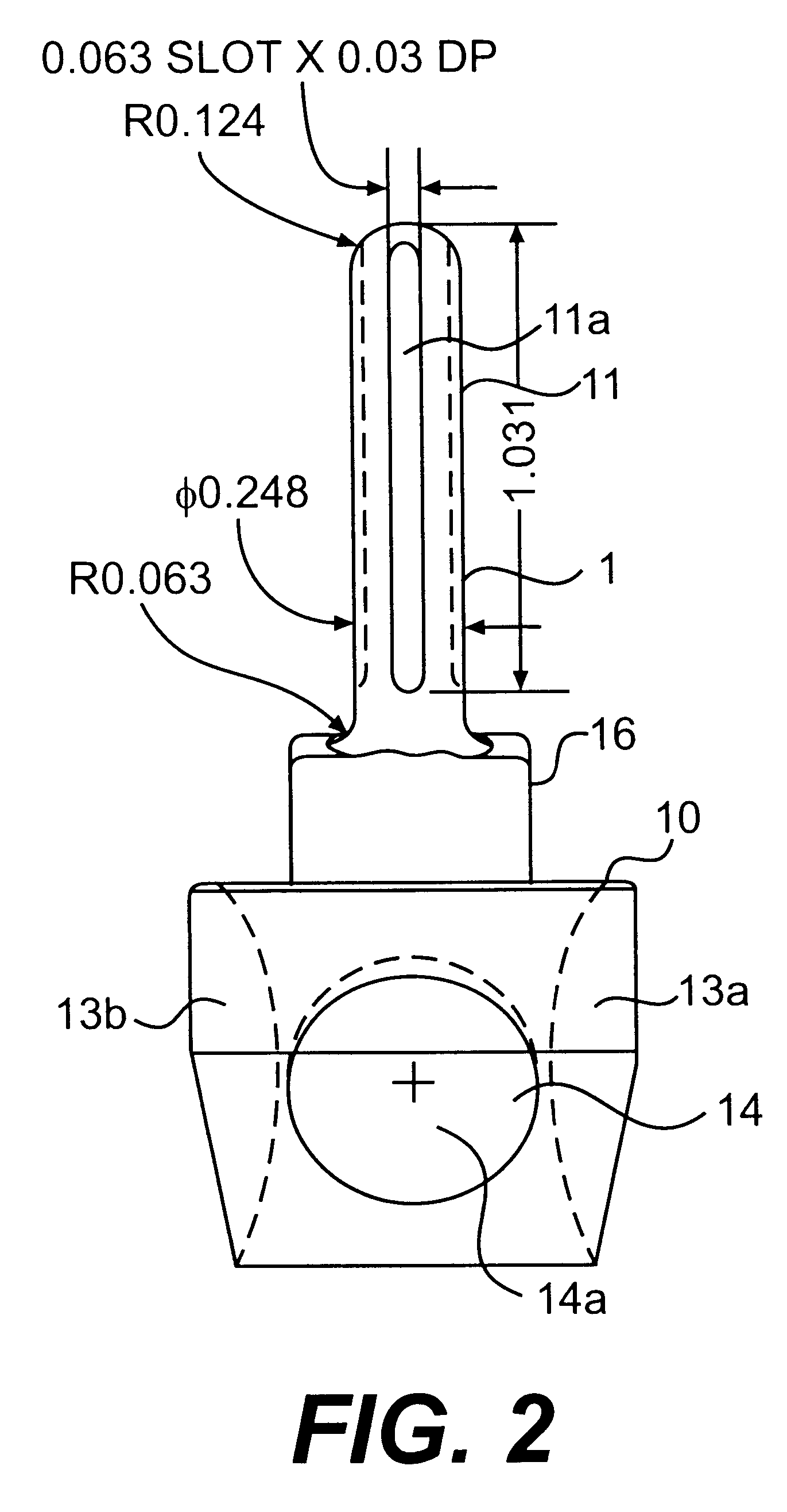Total elbow arthroplasty system
a total elbow and arthroplasty technology, applied in the field of total elbow arthroplasty system, can solve the problems of inability to directly apply to dogs, difficulty in cyclic loading of human total elbow arthroplasty, and difficulty in adjusting the treatment plan,
- Summary
- Abstract
- Description
- Claims
- Application Information
AI Technical Summary
Benefits of technology
Problems solved by technology
Method used
Image
Examples
example 1
Implantation of Endoprosthetic Joint
Each dog was placed in lateral recumbency and a standard aseptic preparation of the forelimb was performed.
A 10-cm skin incision was made extending from the caudal, distal aspect of the humerus to the caudal, mid-ulna. Sharp dissection was used to expose the proximal third of the ulna. An ulnar osteotomy was performed 3 cm below the level of the radial head. The humeral-ulnar and radial-ulnar ligaments were transected and the ulna was luxated proximally. This provided excellent exposure of the distal humerus and proximal radius while preserving the medial and lateral humeral-radial collateral ligaments.
The humerus was prepared for implantation of the humeral component as described in U.S. patent application Ser. No. 09 / 207,689. More specifically, referring to FIGS. 12-15 the humerus was prepared for implantation of the humeral component using the specially designed humeral cutting guide 37 of the present invention. A drill bit (5 to 9 mm) was used...
example 2
Post-Operative Results
The ball and socket design was successfully implanted in two dogs using the procedures of Example 1. The surgical procedures went smoothly and surgical time was under two hours for each dog. Within two weeks of surgery, both dogs used the operated leg during walking. At eight weeks after surgery, the dogs used the leg during each step during walking and at a trot. The use of the limb was approximately 75% of normal use. Range of motion at 8 weeks was 75 degrees.
PUM
 Login to View More
Login to View More Abstract
Description
Claims
Application Information
 Login to View More
Login to View More - R&D
- Intellectual Property
- Life Sciences
- Materials
- Tech Scout
- Unparalleled Data Quality
- Higher Quality Content
- 60% Fewer Hallucinations
Browse by: Latest US Patents, China's latest patents, Technical Efficacy Thesaurus, Application Domain, Technology Topic, Popular Technical Reports.
© 2025 PatSnap. All rights reserved.Legal|Privacy policy|Modern Slavery Act Transparency Statement|Sitemap|About US| Contact US: help@patsnap.com



